“You should be advised, sir,” the clerk advised my husband, “that when the blossoms die, it doesn’t mean the plant is dead. It does go through a dormant stage. And don’t over-water.”
My husband smiled as he paid for the purchase and accepted the carefully wrapped plant to bring home. “Not to worry. My wife knows what to do. She already has at least a dozen of these at home.”
“Oh, well!” The clerk blushed. “I guess she knows how to care for this plant. Enjoy.”
My husband knows that I can never have enough orchids. The amazing array of color combinations is staggering, and when they bloom, they are very prolific and magnificent.
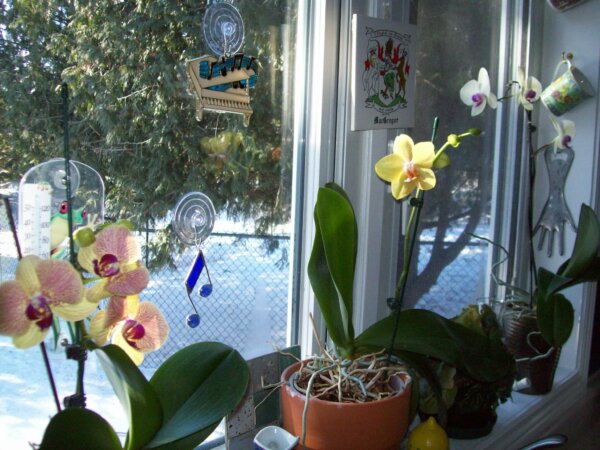
So, how did I start my orchid craze? Blame it on Mom. My Mom. She loved orchids. Whenever Dad took her to a formal dinner or dance, he was expected to buy her a corsage. And the corsage had to be an orchid.
When Mom passed away, I found several dried orchids preserved in treasure boxes on her bureau. The colors were still resplendent in these now fragile, dried remnants.
In her later years, I usually sent Mom a potted orchid to enjoy, rather than a bouquet of flowers. When she was alive, it was fun visiting and exploring her window ledge full of multi-colored orchid delights.
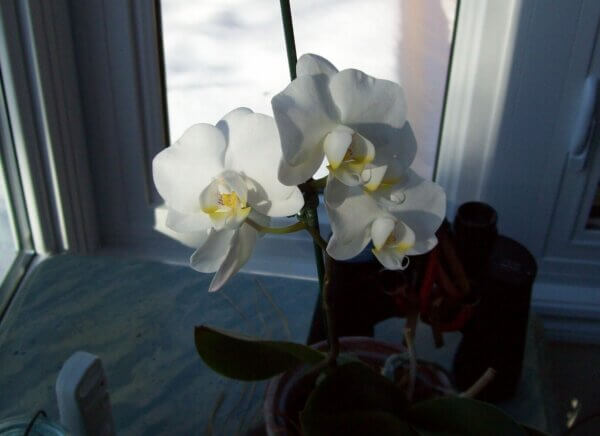
For me, my orchids are kept in my sunroom and on my kitchen window ledge. That’s where I get the best sunlight. And the orchids love it. Especially in the winter.
Which is fine with me, because with the snow-covered landscape outside, the colorful orchid displays add a little zest to my life. Since I can’t garden outside in the cold with the earth frozen and snow-covered, I may as well garden indoors.
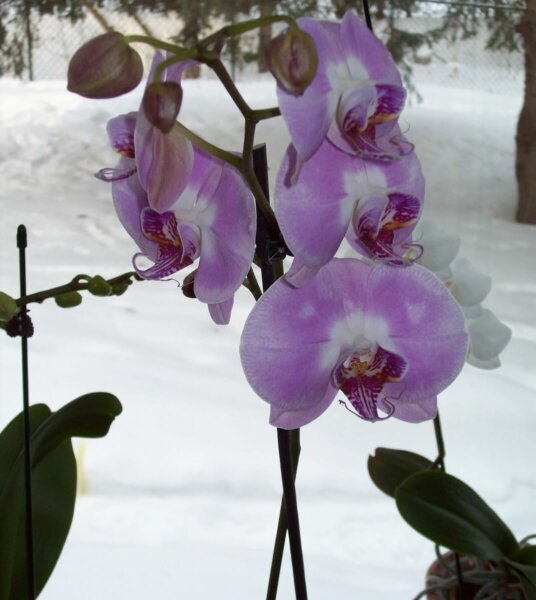
My passion for orchids may be inherited, but orchids have fascinated horticulturalists, both professional and amateurs, for a long time. In fact, orchids are believed to have existed in the age of the dinosaurs, 120 million years ago. If that’s the case, then orchids are perhaps amongst the first flowering plants to exist.
Related Post: Homestead Stories: The Monkey Orchid
In the wild, these plants, with their brightly colored, bizarrely shaped flowers and enchanting smells, have evolved as attractive pollinators; many with a relationship to a single type of insect or bird.
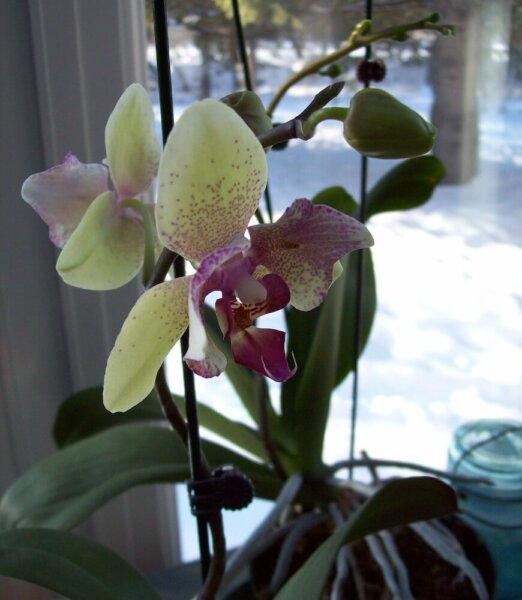
With over 30,000 species of Orchidaceae and 150,000 hybrids, orchids inhabit pretty much the entire planet, except for the arid deserts and the frozen Arctic and Antarctic.
What makes them unique, other than their beautiful, multi-colored, delicate flowers, is that they grow on air, not soil. Have you ever noticed that the potted orchids found in nurseries are growing in pockets of wood chips, bark, and moss? In their natural habitat, orchids actually attach themselves to trees or rocks where they capture the necessary moisture and nutrients as it washes over them.
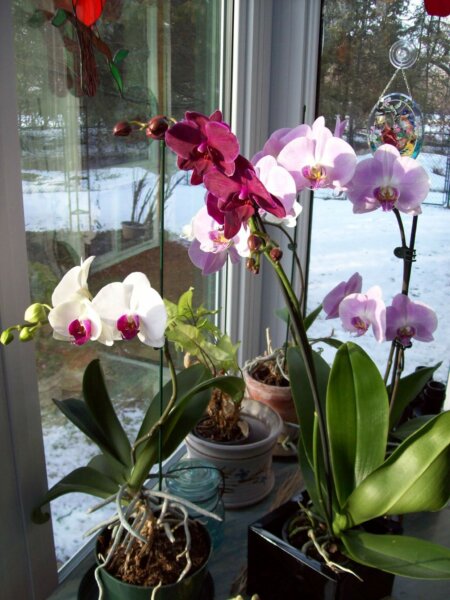
So why bring inside something of beauty and usefulness to the cycle of life in the natural outside world? Well, why not? In spite of what some believe, orchids are not high maintenance.
And they do brighten up any room in which they are placed! Even in their dormant stage, orchids make good conversation pieces, and the promise of another massive collection of blooms is enough to keep the dormant plant in a place of prominence.
Words of advice? I’ve got a few.
Tips For Caring For Orchids
- Don’t over-water. I water my plants once a week, less frequently when in their dormant stage. And I don’t give them too much water each time I water.
- Keep away from cold drafts. In the spring, when I start opening my windows to freshen up the house, I move my orchids away from the still chilly early spring air that’s blowing in the open windows.
- Orchids love the sun but not too much. If the leaves are browning or the flowers drying too fast, I move my plants. Orchids like a change of scenery, too, and different times of the year bring about different intensities of sunlight.
- Orchids love pampering. Every couple of months I take a damp cloth and wipe the dust off the leaves, top and bottom. The plants soak up the attention, quite literally.
- Don’t cut off dead leaves, stems or flowers. Let nature take its course. When the plant is done with the dead appendages, they will quite safely drop off.
- Stake the flower stems carefully. Orchids tend to quickly become top-heavy with their long stems and multiple flowers per stem. Use thin stakes to tie up the spindly stems to keep them from toppling over.
- Avoid repotting. Orchids like to feel at home in their own pot of wood chips, bark, and moss. If you really must repot, wait until the dormant stage so as to avoid disturbing the flowering stems and make sure to use a specific orchid blended soil, which consists of wood chips, bark, and moss compost.
- Most important of all, enjoy. And take lots of pictures.










































This post is so nice, I like this post. I can know how to care for orchids.